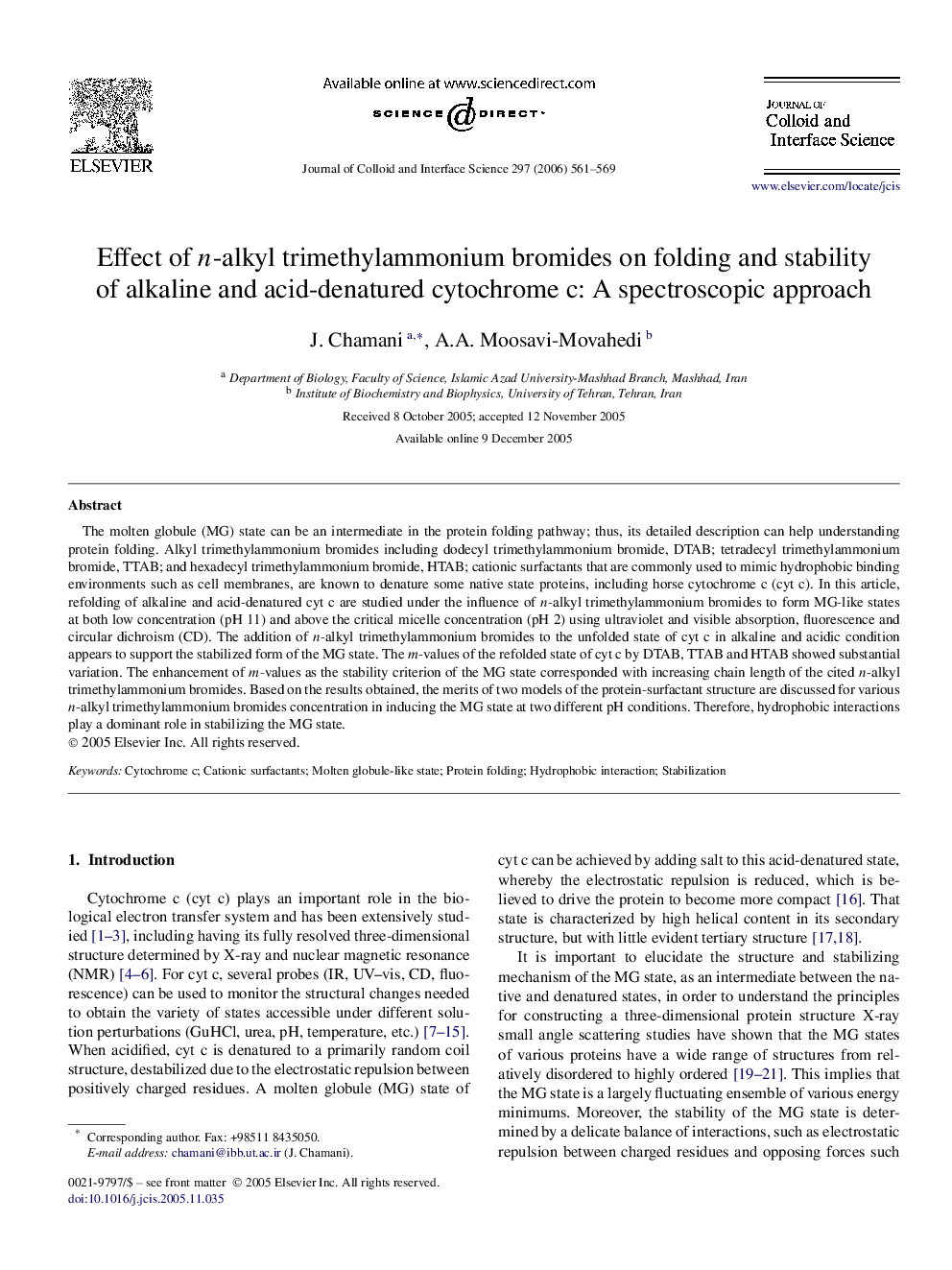| کد مقاله | کد نشریه | سال انتشار | مقاله انگلیسی | نسخه تمام متن |
|---|---|---|---|---|
| 613225 | 880718 | 2006 | 9 صفحه PDF | دانلود رایگان |

The molten globule (MG) state can be an intermediate in the protein folding pathway; thus, its detailed description can help understanding protein folding. Alkyl trimethylammonium bromides including dodecyl trimethylammonium bromide, DTAB; tetradecyl trimethylammonium bromide, TTAB; and hexadecyl trimethylammonium bromide, HTAB; cationic surfactants that are commonly used to mimic hydrophobic binding environments such as cell membranes, are known to denature some native state proteins, including horse cytochrome c (cyt c). In this article, refolding of alkaline and acid-denatured cyt c are studied under the influence of n-alkyl trimethylammonium bromides to form MG-like states at both low concentration (pH 11) and above the critical micelle concentration (pH 2) using ultraviolet and visible absorption, fluorescence and circular dichroism (CD). The addition of n-alkyl trimethylammonium bromides to the unfolded state of cyt c in alkaline and acidic condition appears to support the stabilized form of the MG state. The m-values of the refolded state of cyt c by DTAB, TTAB and HTAB showed substantial variation. The enhancement of m-values as the stability criterion of the MG state corresponded with increasing chain length of the cited n-alkyl trimethylammonium bromides. Based on the results obtained, the merits of two models of the protein-surfactant structure are discussed for various n-alkyl trimethylammonium bromides concentration in inducing the MG state at two different pH conditions. Therefore, hydrophobic interactions play a dominant role in stabilizing the MG state.
The “necklace and bead” structure of protein–surfacant complexes and its two possibilities. (A) The protein wraps around the micelle. (B) The micelles nucleate on the protein hydrophobic sites. Separate “necklace bead” structures could explain the cyt c-cationic surfacants complexes behavior under different conditions. For 5 μM cyt c, the results suggest that the protein chain wraps around the micelle at below CMC (pH 11), whereas the micelle nucleates on the protein hydrophobic sites at high [n-alkyl trimethylammonium bromides] concentrations (upon to CMC at pH 2).Figure optionsDownload as PowerPoint slide
Journal: Journal of Colloid and Interface Science - Volume 297, Issue 2, 15 May 2006, Pages 561–569